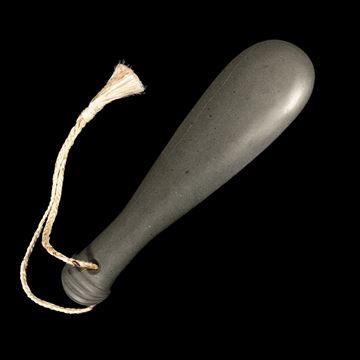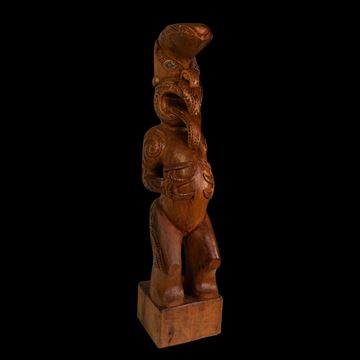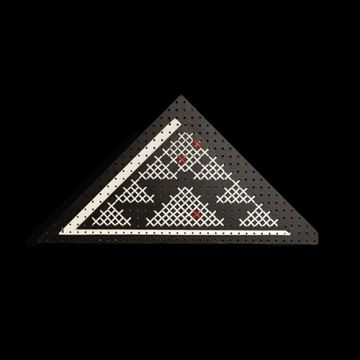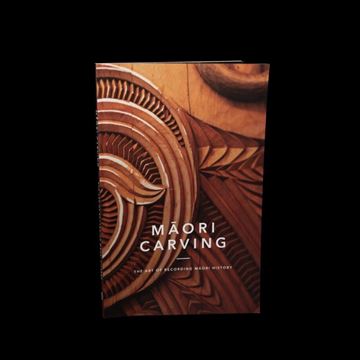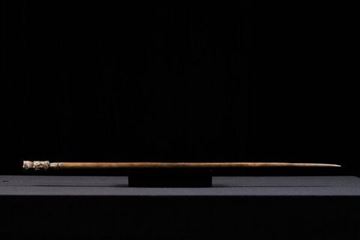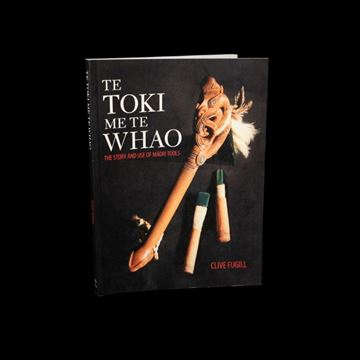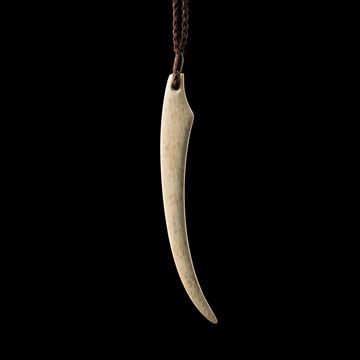
Āhua Gallery
Select Subcategory
Patu Onewa - 6721PD
Patu (meaning to strike or hit) were typically fashioned from native hardwood, whalebone or stone, including our highly valued pounamu (greenstone). Patu were often sharp at their forward edge and were used with thrusting, jabbing and swinging blows.
Māori weapons are notable for their fine sculptural form and were designed for close hand-to-hand combat. No other stone-age war implements surpassed them in deadly effectiveness.
Material: Onewa (NZ Greywacke)
Measurements: 380mm x 100mm
$2,190.00
Tekoteko - 4813HG
The tekoteko is a stylised representation of the main progenitor of a tribe and is the most focal point of the whare whakairo (carved tribal meeting house). They can be found – on traditional meeting houses – either at the highest point at the front apex of the roof or at the front central post. They can also be found at the base of the poutokomanawa (the main central ridge support post) of the house.
Material: Tōtara
Measurements: 865mm x 210mm x 180mm
$4,200.00
Tukutuku (Contemporary) - 2747AM
Tukutuku is a type of ornamental weaving using reed lattice work rather than threads. It is used mainly to adorn the inside walls of wharenui (meeting houses).
Material: Hardboard, Strapping & Acrylic Paint
Measurements: 350mm x 670mm
$490.00
Pāpaka (ed. 2/12) - 4080FD
Pāpaka (crab catching stick) originated in Hawaiki (the original homeland of Māori). Rēhua (the god of fish) handed a pāpaka to a rangatira (chief) before his journey to Aotearoa. This pāpaka is part of a limited edition of 12 bronze casts from an original wood carving by Kawana Waititi. The original will remain part of the New Zealand Māori Arts and Crafts Institute legacy collection.
$3,900.00
Huia Beak - 5696RH
The huia bird held deep significance in Māori culture, symbolizing nobility, leadership, and high status. Its distinctive, white-tipped tail feathers were highly valued and worn by chiefs to represent their mana, or authority and prestige. These feathers were also exchanged as treasured gifts of friendship and kept in beautifully carved boxes called waka huia. Sadly, the huia became extinct in the early 20th century, largely due to habitat destruction, introduced predators, and overhunting, despite efforts to protect it.
Material: Parāoa (Whalebone)
Measurements: 140mm x 18mm x 8mm
$590.00


